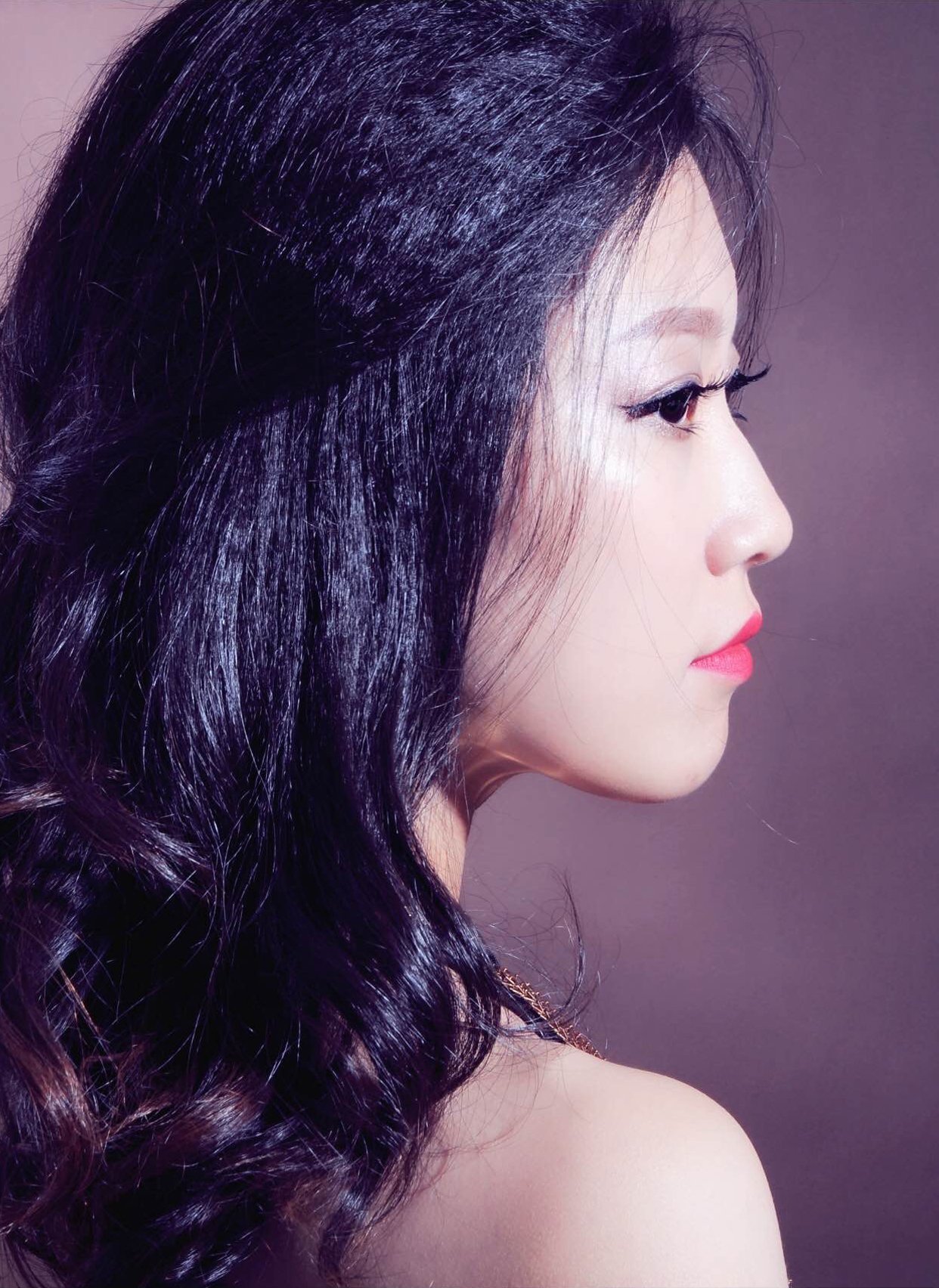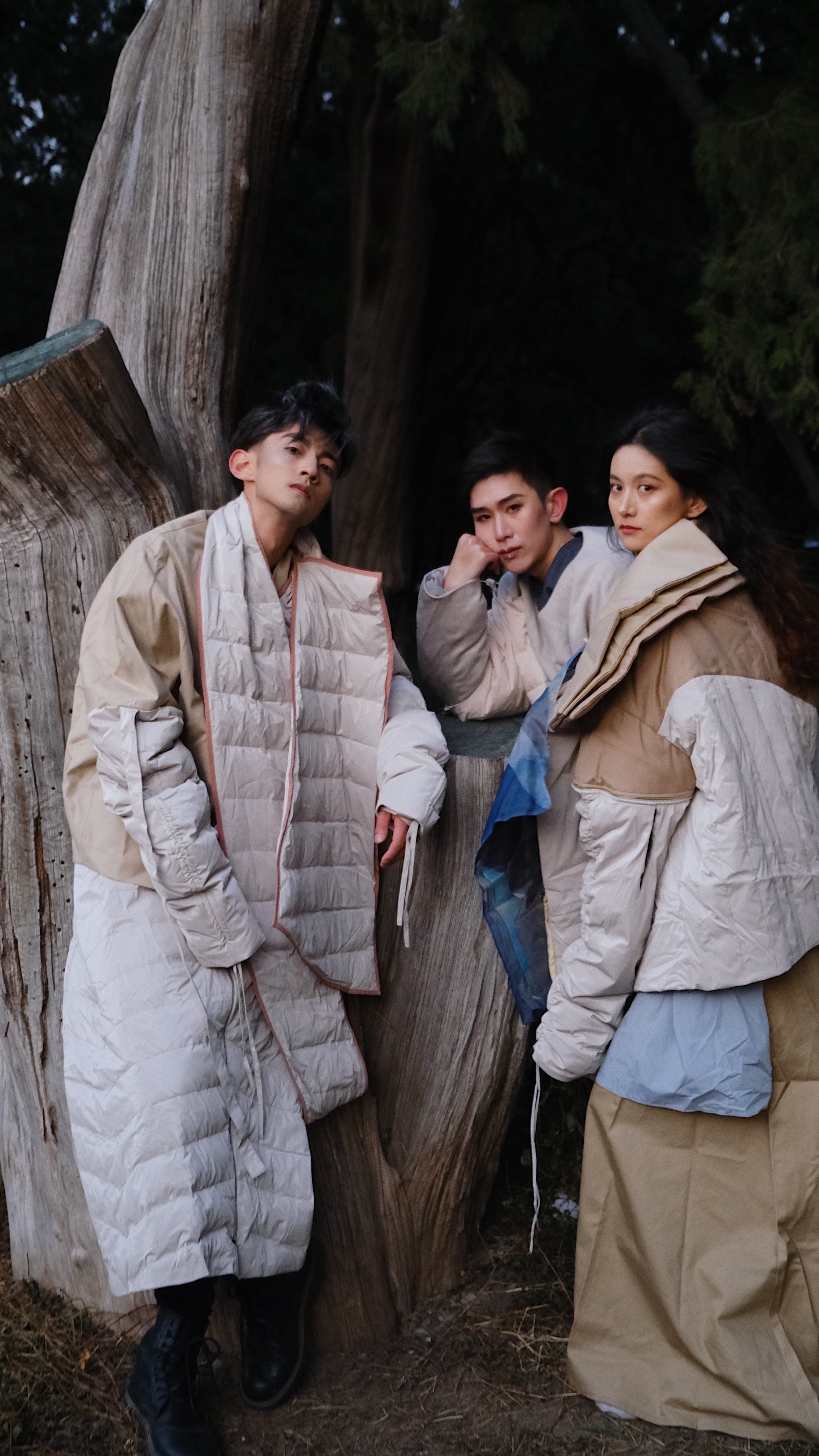10 Questions with Yan Yang
Al-Tiba9 Art Magazine ISSUE11 | Featured Artist
Yan Yang is a painter, installation artist, fashion art designer, and textile pattern designer. She is based in Chicago, IL. She graduated from the School of the Art Institute of Chicago with a Master of Design in Fashion, Body, and Garment, and has been creating fashion art for eight years. She studied drawing and painting as a child, and her skills have laid the foundation for her work.
Yan believes that art and design are connected, and she often combines painting and fashion to create large-scale installations. Through the use of different mediums, she expresses her design ideas. Yan Yang's design work focuses on four topics: the healing of trauma through art, the influence of unisex fashion on contemporary lifestyle, the heritage of traditional intangible culture and innovative design, and sustainable design issues. These four topics are closely related to the destiny of human life. Yan expresses her concern for these creative issues through her design works and shows them to people in the form of fashion art. Her work has won international awards.
Yan Yang believes that art is powerful, and she has developed her own fashion art style throughout her long time of creation. Yan always accepts the difficulties and challenges she encounters in her creation, and she will continue to work hard towards her goals. Yan enjoys the excitement and joy at the moment of completion.
Yan will always go forward in this path of fashion art. She hopes her designs can draw more attention and support social issues worldwide. In addition, she hopes her own designs can bring strength and courage to more people.
Yan Yang - Portrait
Standard Smile | Project Description
Yan Yang's work reflects the psychological healing effect of fashion art on people. Her art series "Standard Smile" hopes to give people the confidence and courage to face trauma and be able to heal.
Yan's work mainly says, "we are afraid of being ignored or isolated in society, so we try our best to smile in order to please others. Finally, our smiles are kidnapped. A gap exists between the real ourselves and what we do/say as we dare not to show the real ourselves, so we play various kinds of roles in society. We put on a "fake smile", a mask. Why these masks? Because we fear reality. Reality - so boring, tedious, and disgusting."
She created a series of works with fashion design and performance art. Yan's work shows that, in fact, we do not need to escape from reality or fool ourselves. Rather, we should accept and appreciate what we are and just be the ones we desire to become.
She hopes that her work can show the importance of Mental Health in our communities. Each of us has the courage and confidence to overcome difficulties, and she hopes that her fashion art can help those who are struggling in mind, body, and Spirit.
Standard Smile, Installation, garments, photography, mixed media, variable dimensions, 2020 © Yan Yang
INTERVIEW
Let's start talking a little about yourself. You mix fashion design and visual arts, but how did you first get involved with art and creativity?
In my opinion, art and design are related. They are both mediums and carriers of self-expression. Visual art and fashion design are not only a way to express my personal feelings but also carry specific cultural connotations and emotions. My initial feelings about art and creativity came from enjoying the works of art masters in museums as a student. For example, my favorite artist, Andy Warhol, experimented with many fields, including painting, printmaking, screen printing, film, and even fashion design. This individual inspired me to explore art and design in the first place.
Tell us more about your studies and work experiences. What are the experiences that shaped the designer you are now? Did you have any aha moment along the path, or did you have it all clear from the beginning?
I have studied and worked in the fashion design field in both China and the United States. For nearly seven years, I completed my bachelor's and master's degrees in fashion design studies at the Beijing Institute of Fashion Technology, one of the top fashion institutions in China. These seven years of basic skills training played a very important role in my future designs, allowing me to express my creations well through different technical means. More than anything, my studies at the School of the Art Institute of Chicago opened my creative eyes and mind, giving me more freedom to create any subject I wanted to express. I spent a long time thinking about what kind of design I really wanted to do. For my current image as a designer, it was not very clear at the beginning. It took a long time to figure it out along the way, and there were many moments of light in the process. I like this feeling of surprise.
Standard Smile, Installation, garments, photography, mixed media, variable dimensions, 2020 © Yan Yang
Standard Smile, Installation, garments, photography, mixed media, variable dimensions, 2020 © Yan Yang
You have a very sculptural and bold style; how do you design your pieces? What are your influences and role models?
As you mentioned a sculptural and bold style, my work is of a larger scale. I think it is easy to bring a sense of power to the audience visually.
I think imagination and creativity are important when designing works. I first think about what the theme of the work is and what kind of inspiration the work can bring to people. Then I sketch the design and present the work through different materials and techniques. I usually don't limit myself to clothing or fine art. I like to combine fashion design and art and present the work through photography, installation, performance, and other forms.
My influences and role models come from my parents' teaching me from a young age to be a giving and valuable person to society.
How did you come up with this style? Was it a gradual process?
It was a gradual process that lasted for many years. In the beginning, it was difficult for me to find a clear way and style through many experiments and different styles of creation. Then, I gradually figured out my own style of work. This process is a good learning and self-improvement process.
In your statement, you mention four main topics that influence your works, "the healing of trauma through art, the influence of unisex fashion on contemporary lifestyle, the heritage of traditional intangible culture and innovative design, and sustainable design issues." How do you incorporate them into your pieces?
Yes, these are the four directions I want to express most, and each topic is about people themselves.
For example, the topic of "the healing of trauma through art". During the years of the COVID-19 pandemic, people suffered from death, loss of loved ones, grief, and depression due to the long-term quarantine. My work "RECORDING" is a combination of painting and clothing design to express the healing of trauma through art, hoping to give people confidence and courage to face any trauma.
"The influence of unisex fashion on contemporary lifestyle," is a topic that I want to appeal to people not to have sexism and gender prejudice through my works, and everyone has the right to choose their own gender. So the creation of unisex fashion is to promote and encourage this movement.
For the theme of "the heritage of traditional intangible culture and innovative design", I visited many rural areas of national minorities, where the old people have very good hand embroidery skills. Still, because of the lack of successors, many handicrafts are gradually disappearing. I want to be able to pass on these intangible cultural skills through my work.
Finally, the topic of "sustainable design issues" is an inevitable issue in the field of fashion development. The problem of overproduction and pollution in the fashion industry is an important issue in global ecological development. As a fashionista, it is essential to think about sustainable design. These are big topics that will take a long time and a lot of effort to achieve little by little.
Standard Smile, Installation, garments, photography, mixed media, variable dimensions, 2020 © Yan Yang
Standard Smile, Installation, garments, photography, mixed media, variable dimensions, 2020 © Yan Yang
Your series Standard Smile is an acute description of a common feeling and the fear of being ignored in society. How important do you think fashion is for self-expression? And how do you use it to stand out?
Very important and incalculable. Fashion is one of the most intuitive forms of outward expression.
My series Standard Smile mainly show that people are afraid to show their true self in today's social environment. People have become accustomed to using a protective cover to maintain social distancing when socializing with others. Through my series Standard Smile, I want to express an attitude of being brave and being yourself. People will eventually overcome their inner fears, break their self-shackles, and bravely come out of the dark to show their purest and truest selves.
Recently, we have been witnessing growing attention toward sustainable fashion. Where do you stand in this regard? Do you embrace this movement, or is it just greenwashing?
Sustainable fashion has become a consensus, and I support the development of sustainable fashion. I also used many sustainable and environmentally friendly materials in my creations. Cross-brand, cross-industry and cross-group cooperation is becoming increasingly important to promote the green transformation of the fashion industry, which requires the participation and efforts of many parties.
Standard Smile, Installation, garments, photography, mixed media, variable dimensions, 2020 © Yan Yang
What do you hope to accomplish this year, both in terms of career goals and personal life?
I have accomplished more than half of my professional goals this year, participated in many online and offline art exhibitions, and had my fashion designs published in some fashion magazines. In the second half of the year, I plan to participate in some fashion shows and create more projects at the same time. I have been able to maintain a good work-life balance and will continue to be productive and hard-working.
Do you have any upcoming shows or publications where our readers can find your work?
You can follow me on Instagram or my personal website. I will keep my portfolio updated on my website and announce some of my upcoming exhibitions or publications on Instagram.
And lastly, where do you see yourself five years from now?
Whether five or ten years from now, I want to contribute more to society and all of humanity. I hope I will always retain my passion for creating art and design. In the next five years, I want to create more artwork that can bring hope and healing to individuals. I also hope my design and art can draw more attention and support the social issues in the world.
























